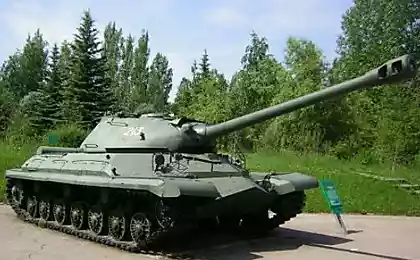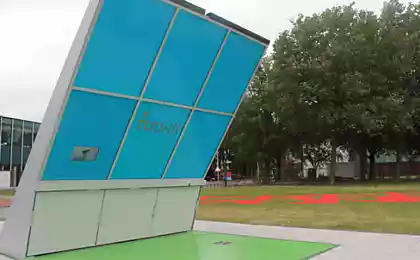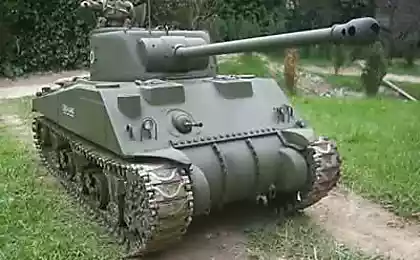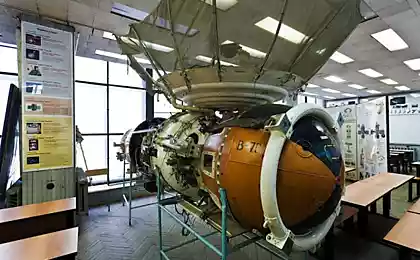481
Wireless charging of electric cars. The ways and prospects
All who are in any way associated with customers operating in the energy portable power sources (the good, the bulk of the population owns "cell phones"), you know that their quality and durability depends mainly comfortable as the owner and operating reliability. The problem of creating a "perfect" battery experts are engaged not the first year. Sources of DC power are in demand in many spheres of human activity.
With the growing popularity of electric transport is extremely acutely the question of the creation of the battery, providing a maximum cruising range of the vehicle with electric drive. Anyway, battery is almost the main element of the electric vehicle.

Japanese company Toshiba has developed a bus with electric propulsion, battery SW (Super Charge ion Battery). Elektroavtomat with the name Hino has a special charger magnetic resonance type providing contactless charging method. The vehicle 45 seats already used for the carriage of passengers. The route that a moving bus has a length of 11 kilometers and connects Haneda airport and the airlines ' branch office in Tanimachi.
A huge help in the creation of a system for contactless charging was provided by specialists of the University of Tokyo Waseda. As is known, such a system requires a transmitter and a receiver of energy. In this case, the "base" of the developers posted on the bus stop at the level of the roadway. Accordingly, the receiving part is located under the bottom of the vehicle. The system has increased transmission power of energy and not very sensitive to the location of the components.
The maximum distance a bus can travel on one full charge, is located 89 km away. a Full replenishment of energy lasts 15 minutes. Given the fact that the project is in an experimental state, during the day elektroavtomat makes only 3 flights. For such a mode of operation of these technical indicators are enough.

System wireless charging wish to acquire and Daimler. Now this opportunity will have a hybrid model and serial performance Mercedes S 500 e. The sedan would provide in addition the charger is able to charge the hybrid in the distance. According to representatives of the company, the conversion will happen in the next 2017.
Power charger is 3.6 kW. To do this, the driver must, according to the supplied instructions, to correctly position the receiver in an electric vehicle. To make full use of the induction effect, the location of the receiver relative to the transmitter should be as accurate as possible. Subject to this condition, the battery charging starts automatically. The power of the device is not a record: the Tesla 10 kW and Supercharger — Fi 120 kW!
It remains to give the achievements of some standardization. Researching this problem the experts SAE. Wireless chargers needs to go through the necessary testing, and only then will it be the SAE J2954 document regulating device compatibility, and are defined by their standard power developed by rules of safe operation. published
P. S. And remember, only by changing their consumption — together we change the world! ©
Source: electromobiler.com/besprovodnaya-zaryadka-elektrokarov-puti-i-perspektivyi/
With the growing popularity of electric transport is extremely acutely the question of the creation of the battery, providing a maximum cruising range of the vehicle with electric drive. Anyway, battery is almost the main element of the electric vehicle.

Japanese company Toshiba has developed a bus with electric propulsion, battery SW (Super Charge ion Battery). Elektroavtomat with the name Hino has a special charger magnetic resonance type providing contactless charging method. The vehicle 45 seats already used for the carriage of passengers. The route that a moving bus has a length of 11 kilometers and connects Haneda airport and the airlines ' branch office in Tanimachi.
A huge help in the creation of a system for contactless charging was provided by specialists of the University of Tokyo Waseda. As is known, such a system requires a transmitter and a receiver of energy. In this case, the "base" of the developers posted on the bus stop at the level of the roadway. Accordingly, the receiving part is located under the bottom of the vehicle. The system has increased transmission power of energy and not very sensitive to the location of the components.
The maximum distance a bus can travel on one full charge, is located 89 km away. a Full replenishment of energy lasts 15 minutes. Given the fact that the project is in an experimental state, during the day elektroavtomat makes only 3 flights. For such a mode of operation of these technical indicators are enough.

System wireless charging wish to acquire and Daimler. Now this opportunity will have a hybrid model and serial performance Mercedes S 500 e. The sedan would provide in addition the charger is able to charge the hybrid in the distance. According to representatives of the company, the conversion will happen in the next 2017.
Power charger is 3.6 kW. To do this, the driver must, according to the supplied instructions, to correctly position the receiver in an electric vehicle. To make full use of the induction effect, the location of the receiver relative to the transmitter should be as accurate as possible. Subject to this condition, the battery charging starts automatically. The power of the device is not a record: the Tesla 10 kW and Supercharger — Fi 120 kW!
It remains to give the achievements of some standardization. Researching this problem the experts SAE. Wireless chargers needs to go through the necessary testing, and only then will it be the SAE J2954 document regulating device compatibility, and are defined by their standard power developed by rules of safe operation. published
P. S. And remember, only by changing their consumption — together we change the world! ©
Source: electromobiler.com/besprovodnaya-zaryadka-elektrokarov-puti-i-perspektivyi/























